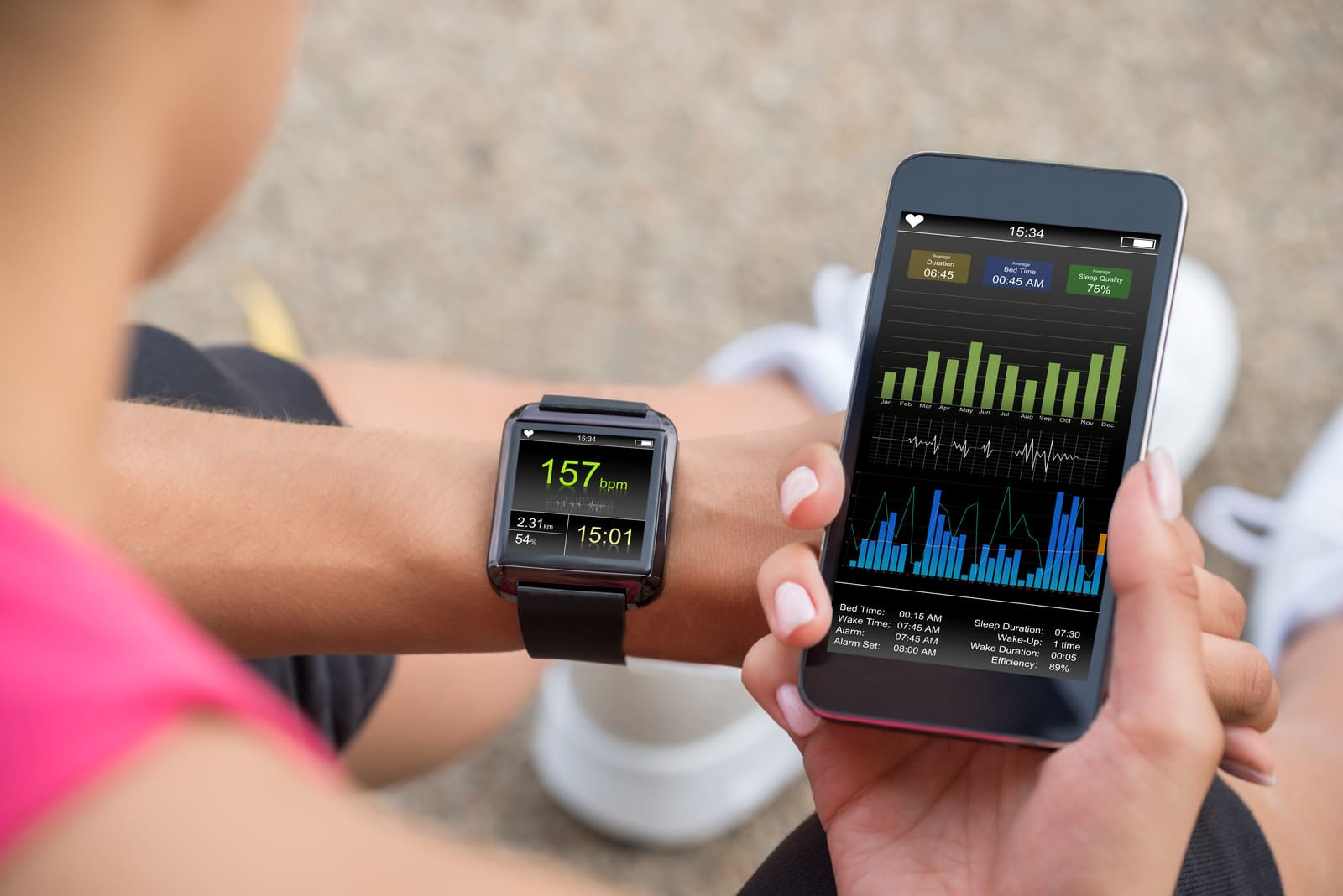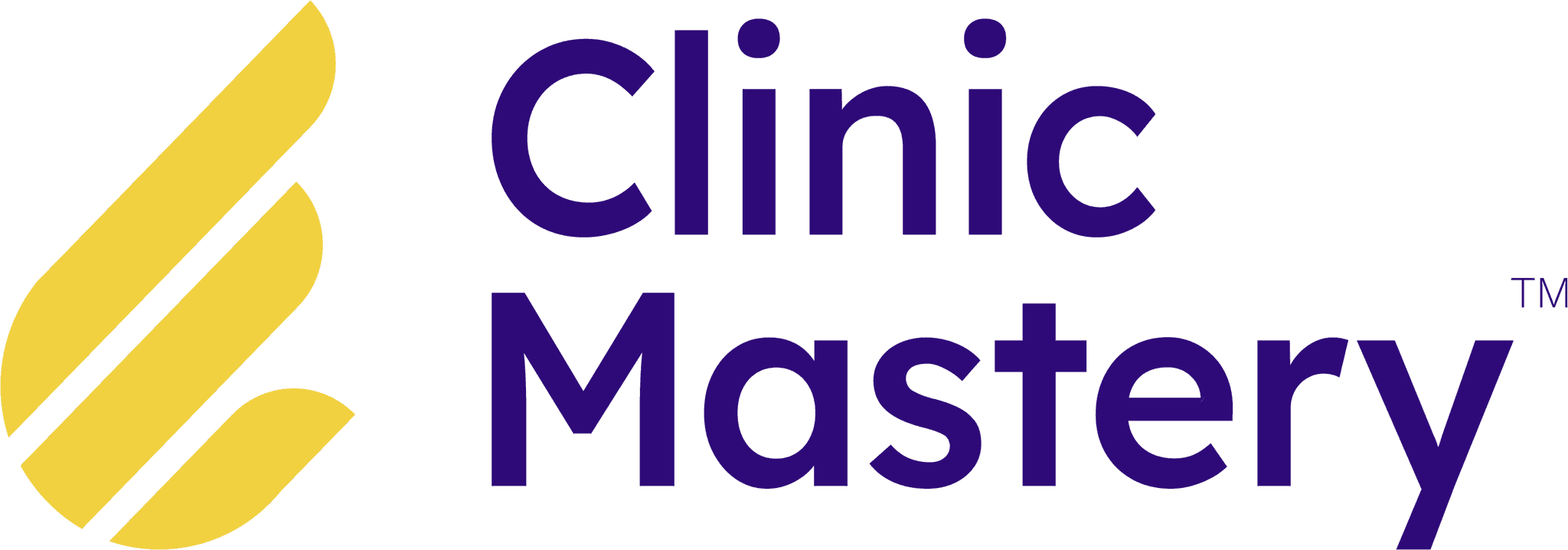Client Experiences
•
15 min read
•
Feb 6, 2018
Physitrack: Patient Self Reporting Outcomes
What Get’s Measured, Get’s Managed!
As a practitioner, you’re always looking to help your patients get better quicker and stay that way for longer, we’ll that’s what Physitrack can help you do.
In this education piece, we’ll share how you can get started with Physitrack and also save on your membership as a member of the Clinic Mastery community.
If you’re interested in learning more about how you can get the most out of using Physitrack, then tune into our ongoing education series.
Full Transcript
Well hi everyone! This is Jack from clinicmastery.com, and we’re really excited to bring you this new series on Physitrack and how you can really leverage it to improve your client experiences and outcomes for your patients.
Let’s drive straight in it and talk about outcome measures.
We know as clinicians that outcome measures are really important.
They are things that we can hang our hat on and objectively measure the clinical progression of our clients.
So often times, we’re using maybe subjective measures, like a visual analogue score or pain score, or we’re simply eyeballing things and using percentages and best guesses or educated guesses.
With Physitrack, we can now overcome that and really depend on proven gold standard outcome measures. So, let’s jump right in.
[0:00:53.4]
This is the homepage of Physitrack when you log in, and we’re just gonna jump over to the client section over here, and I’ve already preloaded it to search for me.
I’ve put myself in as a dummy patient to protect our patients’ privacy.
So what you can do is when – you might be familiar with Physitrack, and we can assign programs to patients. So let’s do that.
We’re gonna clear the exercise basket and create a new program, and we’re gonna show you step by step how you can use outcome measures in Physitrack to improve your client experiences and outcomes.
So let’s add an exercise as you would be familiar with.
So let’s pick a simple McKenzie standing back extension, and we’ll go here to assign this program.
When we go to assign, what we can do is we can track adherence and track pain levels.
So as we know that tracking pain levels using a visual analog scale is really helpful for patient, and patient described or patient feedback for the pain level. So we can do that.
We can also attach outcome measures here, and Physitrack comes preloaded with all of the gold standards, research-backed outcome measures like the Orebro, like the Oswestry, like the Oxford Knee Score. If we go back up the top here, you’ve got the DASS, the Dizziness Handicap Inventory.
All of these outcome measures – the Roland-Morris Low Back Pain.
We’ve got VISAs and upper extremities and DASHes, and all sorts of things. And what you can do, when you allocate one of these – so let’s allocate the Orebro – as the clinician, you can prescribe when a patient fills these in, whether that’s at the start and at the end of their program, weekly, daily.
So at all these different times. And what that means is the patient can only access their exercises after they’ve completed the outcome measure that you need, which is really, really powerful.
[0:02:49.8]
You can add in any extra comments, and then you can assign that program.
So what I’ve done is I’ve preloaded a few of our existing patients, protecting their identity, to show you what this actually looks like in real life.
So you would normally assign that and when the patient receives it, they would get not only their exercise, which you can see here in the background, but their outcome measure they must complete, as well as tracking their pain scores each time they complete their exercises.
So you can see here, this is a real patient of ours, and here’s just a quick insight into a simple pain score adherence.
And you can see here, when the patient first started their exercises back on Tuesday the 28th, they completed at 100% completion with an overall pain score of five.
And then as the week trended on, they ended up completing at 100% with a pain score of three and then two. And ten likewise, this week they’ve had an average pain score of three.
That gives you some really good objective trends to say that your exercise program is working and that the patient is building tolerance and decreasing pain as they maintain their load as per your prescription. Really helpful data.
So you can see that patients are completing their exercises and recording their pain.
And that’s a really simple one that you would often get the standard patients to do, but let’s look at a little bit more advanced here.
[0:04:13.9]
We’ve got a patient with an Achilles tendinopathy, and this patient has been completing the program for a number of weeks.
And if we look back here at the start of the program, now the bar chart in the background is the completion.
So you can see as I hover along, this one was completed 63%, this particular day was 58%.
This particular day was 90% and 100%. And you can see that the pain levels are interestingly fairly correlate with the completion, although not on this day.
So we’ve got some really interesting pain trends where they’re dropping down to two out of ten, and overall back up to six out of ten.
Up here, it’s a fairly standard pain score, and then up here, the pain is slowly trending down despite better adherence.
So interestingly enough, Physitrack will tell us that the average adherence for this week was 89% compared to 88% and 73%, so the patient’s getting better at doing their exercises.
You can see the pain trends as they complete their exercises more.
You’ve got 90% completion here; that pain is consistent rather than a spiking pain trend.
So there’s lots of interesting trends here. And you can see this is the – as the weeks get more recent, the pain scores are staying low and adherence is creeping up.
And up here, we’re looking at adherence of 92% and average pain scores down around one, and that’s a fantastic progression, that’s what you want to see as we get to week five of a loading program of these patient’s Achilles tendinopathy.
[0:05:51.7]
That’s fantastic. Now, we can actually click in and say, let’s pick a week.
So we can see here the completion level is 92%, 92%, 50%. We can actually click in here and view the details of this.
If we click in here and have a look, we can see that on that Friday, the assigned was six reps and five sets, and she/he completed, six reps and five sets with a pain level of six and a pain level of five, so we can see all those different things, which is really, really interesting.
So that’s a really good way of looking at the pain trends and adherence elements of outcome measures. But here’s where the magic really happens.
As we can see here, we’ve switched over from the adherence tab to the outcome measures tab.
This is the same patient for the Achilles tendinopathy.
And what the clinician or the therapist has done in this example has got the patient to complete a pain self-efficacy questionnaire, which we know is a very good, reliable, objective measure, and the patient has completed this.
You can see here, the 2nd, the 9th, the 16th, the 23rd and the 30th of November, and progressively gotten a higher score.
It started off with 48, 51, 50, and then this week, a total score of 60, which is fantastic, because as we know as clinicians, tendinopathies take time to heal.
As this patient has become more adherent with their exercises, we know that their pain self-efficacy questionnaire has improved, their overall pain score has improved.
Remember, we saw back here, their overall pain, if we scroll back up to the current week here, their pain has improved and their clinical outcome measures have improved and that’s what sets Physitrack apart.
You’re not just prescribing exercises to your clients; you’re not just providing videos and written prescriptions and sets and reps are prescribed, which is fantastic and we’ve covered that previously on a Clinic Mastery series on Physitrack, but we will highlight to you the importance, relevance and usefulness of the outcome measures feature of Physitrack.
Not only can you track pain and adherence, which are really helpful and really important, you can also use these outcome measures to predate them to be done at the start of each week, and get those trends, those scores improving.
[0:08:18.4]
So, that is one of the really useful elements of the outcome measures of Physitrack.
Make sure you stay tuned for the future episodes in this series. We’ll be looking at the use of the educational resources and materials of Physitrack to improve your client’s experiences and outcomes.
Trust that’s been helpful! Stay tuned for the next episode.
Conclusion
The digital health revolution is here!
Really, the question is… are you going to be a key player or be left behind?!
Clinic Mastery are proud to be an educate partner and affiliate of Physitrack because we share the same ethos… Delivering Amazing Client Experiences.
What Get’s Measured, Get’s Managed!
As a practitioner, you’re always looking to help your patients get better quicker and stay that way for longer, we’ll that’s what Physitrack can help you do.
In this education piece, we’ll share how you can get started with Physitrack and also save on your membership as a member of the Clinic Mastery community.
If you’re interested in learning more about how you can get the most out of using Physitrack, then tune into our ongoing education series.
Full Transcript
Well hi everyone! This is Jack from clinicmastery.com, and we’re really excited to bring you this new series on Physitrack and how you can really leverage it to improve your client experiences and outcomes for your patients.
Let’s drive straight in it and talk about outcome measures.
We know as clinicians that outcome measures are really important.
They are things that we can hang our hat on and objectively measure the clinical progression of our clients.
So often times, we’re using maybe subjective measures, like a visual analogue score or pain score, or we’re simply eyeballing things and using percentages and best guesses or educated guesses.
With Physitrack, we can now overcome that and really depend on proven gold standard outcome measures. So, let’s jump right in.
[0:00:53.4]
This is the homepage of Physitrack when you log in, and we’re just gonna jump over to the client section over here, and I’ve already preloaded it to search for me.
I’ve put myself in as a dummy patient to protect our patients’ privacy.
So what you can do is when – you might be familiar with Physitrack, and we can assign programs to patients. So let’s do that.
We’re gonna clear the exercise basket and create a new program, and we’re gonna show you step by step how you can use outcome measures in Physitrack to improve your client experiences and outcomes.
So let’s add an exercise as you would be familiar with.
So let’s pick a simple McKenzie standing back extension, and we’ll go here to assign this program.
When we go to assign, what we can do is we can track adherence and track pain levels.
So as we know that tracking pain levels using a visual analog scale is really helpful for patient, and patient described or patient feedback for the pain level. So we can do that.
We can also attach outcome measures here, and Physitrack comes preloaded with all of the gold standards, research-backed outcome measures like the Orebro, like the Oswestry, like the Oxford Knee Score. If we go back up the top here, you’ve got the DASS, the Dizziness Handicap Inventory.
All of these outcome measures – the Roland-Morris Low Back Pain.
We’ve got VISAs and upper extremities and DASHes, and all sorts of things. And what you can do, when you allocate one of these – so let’s allocate the Orebro – as the clinician, you can prescribe when a patient fills these in, whether that’s at the start and at the end of their program, weekly, daily.
So at all these different times. And what that means is the patient can only access their exercises after they’ve completed the outcome measure that you need, which is really, really powerful.
[0:02:49.8]
You can add in any extra comments, and then you can assign that program.
So what I’ve done is I’ve preloaded a few of our existing patients, protecting their identity, to show you what this actually looks like in real life.
So you would normally assign that and when the patient receives it, they would get not only their exercise, which you can see here in the background, but their outcome measure they must complete, as well as tracking their pain scores each time they complete their exercises.
So you can see here, this is a real patient of ours, and here’s just a quick insight into a simple pain score adherence.
And you can see here, when the patient first started their exercises back on Tuesday the 28th, they completed at 100% completion with an overall pain score of five.
And then as the week trended on, they ended up completing at 100% with a pain score of three and then two. And ten likewise, this week they’ve had an average pain score of three.
That gives you some really good objective trends to say that your exercise program is working and that the patient is building tolerance and decreasing pain as they maintain their load as per your prescription. Really helpful data.
So you can see that patients are completing their exercises and recording their pain.
And that’s a really simple one that you would often get the standard patients to do, but let’s look at a little bit more advanced here.
[0:04:13.9]
We’ve got a patient with an Achilles tendinopathy, and this patient has been completing the program for a number of weeks.
And if we look back here at the start of the program, now the bar chart in the background is the completion.
So you can see as I hover along, this one was completed 63%, this particular day was 58%.
This particular day was 90% and 100%. And you can see that the pain levels are interestingly fairly correlate with the completion, although not on this day.
So we’ve got some really interesting pain trends where they’re dropping down to two out of ten, and overall back up to six out of ten.
Up here, it’s a fairly standard pain score, and then up here, the pain is slowly trending down despite better adherence.
So interestingly enough, Physitrack will tell us that the average adherence for this week was 89% compared to 88% and 73%, so the patient’s getting better at doing their exercises.
You can see the pain trends as they complete their exercises more.
You’ve got 90% completion here; that pain is consistent rather than a spiking pain trend.
So there’s lots of interesting trends here. And you can see this is the – as the weeks get more recent, the pain scores are staying low and adherence is creeping up.
And up here, we’re looking at adherence of 92% and average pain scores down around one, and that’s a fantastic progression, that’s what you want to see as we get to week five of a loading program of these patient’s Achilles tendinopathy.
[0:05:51.7]
That’s fantastic. Now, we can actually click in and say, let’s pick a week.
So we can see here the completion level is 92%, 92%, 50%. We can actually click in here and view the details of this.
If we click in here and have a look, we can see that on that Friday, the assigned was six reps and five sets, and she/he completed, six reps and five sets with a pain level of six and a pain level of five, so we can see all those different things, which is really, really interesting.
So that’s a really good way of looking at the pain trends and adherence elements of outcome measures. But here’s where the magic really happens.
As we can see here, we’ve switched over from the adherence tab to the outcome measures tab.
This is the same patient for the Achilles tendinopathy.
And what the clinician or the therapist has done in this example has got the patient to complete a pain self-efficacy questionnaire, which we know is a very good, reliable, objective measure, and the patient has completed this.
You can see here, the 2nd, the 9th, the 16th, the 23rd and the 30th of November, and progressively gotten a higher score.
It started off with 48, 51, 50, and then this week, a total score of 60, which is fantastic, because as we know as clinicians, tendinopathies take time to heal.
As this patient has become more adherent with their exercises, we know that their pain self-efficacy questionnaire has improved, their overall pain score has improved.
Remember, we saw back here, their overall pain, if we scroll back up to the current week here, their pain has improved and their clinical outcome measures have improved and that’s what sets Physitrack apart.
You’re not just prescribing exercises to your clients; you’re not just providing videos and written prescriptions and sets and reps are prescribed, which is fantastic and we’ve covered that previously on a Clinic Mastery series on Physitrack, but we will highlight to you the importance, relevance and usefulness of the outcome measures feature of Physitrack.
Not only can you track pain and adherence, which are really helpful and really important, you can also use these outcome measures to predate them to be done at the start of each week, and get those trends, those scores improving.
[0:08:18.4]
So, that is one of the really useful elements of the outcome measures of Physitrack.
Make sure you stay tuned for the future episodes in this series. We’ll be looking at the use of the educational resources and materials of Physitrack to improve your client’s experiences and outcomes.
Trust that’s been helpful! Stay tuned for the next episode.
Conclusion
The digital health revolution is here!
Really, the question is… are you going to be a key player or be left behind?!
Clinic Mastery are proud to be an educate partner and affiliate of Physitrack because we share the same ethos… Delivering Amazing Client Experiences.
What Get’s Measured, Get’s Managed!
As a practitioner, you’re always looking to help your patients get better quicker and stay that way for longer, we’ll that’s what Physitrack can help you do.
In this education piece, we’ll share how you can get started with Physitrack and also save on your membership as a member of the Clinic Mastery community.
If you’re interested in learning more about how you can get the most out of using Physitrack, then tune into our ongoing education series.
Full Transcript
Well hi everyone! This is Jack from clinicmastery.com, and we’re really excited to bring you this new series on Physitrack and how you can really leverage it to improve your client experiences and outcomes for your patients.
Let’s drive straight in it and talk about outcome measures.
We know as clinicians that outcome measures are really important.
They are things that we can hang our hat on and objectively measure the clinical progression of our clients.
So often times, we’re using maybe subjective measures, like a visual analogue score or pain score, or we’re simply eyeballing things and using percentages and best guesses or educated guesses.
With Physitrack, we can now overcome that and really depend on proven gold standard outcome measures. So, let’s jump right in.
[0:00:53.4]
This is the homepage of Physitrack when you log in, and we’re just gonna jump over to the client section over here, and I’ve already preloaded it to search for me.
I’ve put myself in as a dummy patient to protect our patients’ privacy.
So what you can do is when – you might be familiar with Physitrack, and we can assign programs to patients. So let’s do that.
We’re gonna clear the exercise basket and create a new program, and we’re gonna show you step by step how you can use outcome measures in Physitrack to improve your client experiences and outcomes.
So let’s add an exercise as you would be familiar with.
So let’s pick a simple McKenzie standing back extension, and we’ll go here to assign this program.
When we go to assign, what we can do is we can track adherence and track pain levels.
So as we know that tracking pain levels using a visual analog scale is really helpful for patient, and patient described or patient feedback for the pain level. So we can do that.
We can also attach outcome measures here, and Physitrack comes preloaded with all of the gold standards, research-backed outcome measures like the Orebro, like the Oswestry, like the Oxford Knee Score. If we go back up the top here, you’ve got the DASS, the Dizziness Handicap Inventory.
All of these outcome measures – the Roland-Morris Low Back Pain.
We’ve got VISAs and upper extremities and DASHes, and all sorts of things. And what you can do, when you allocate one of these – so let’s allocate the Orebro – as the clinician, you can prescribe when a patient fills these in, whether that’s at the start and at the end of their program, weekly, daily.
So at all these different times. And what that means is the patient can only access their exercises after they’ve completed the outcome measure that you need, which is really, really powerful.
[0:02:49.8]
You can add in any extra comments, and then you can assign that program.
So what I’ve done is I’ve preloaded a few of our existing patients, protecting their identity, to show you what this actually looks like in real life.
So you would normally assign that and when the patient receives it, they would get not only their exercise, which you can see here in the background, but their outcome measure they must complete, as well as tracking their pain scores each time they complete their exercises.
So you can see here, this is a real patient of ours, and here’s just a quick insight into a simple pain score adherence.
And you can see here, when the patient first started their exercises back on Tuesday the 28th, they completed at 100% completion with an overall pain score of five.
And then as the week trended on, they ended up completing at 100% with a pain score of three and then two. And ten likewise, this week they’ve had an average pain score of three.
That gives you some really good objective trends to say that your exercise program is working and that the patient is building tolerance and decreasing pain as they maintain their load as per your prescription. Really helpful data.
So you can see that patients are completing their exercises and recording their pain.
And that’s a really simple one that you would often get the standard patients to do, but let’s look at a little bit more advanced here.
[0:04:13.9]
We’ve got a patient with an Achilles tendinopathy, and this patient has been completing the program for a number of weeks.
And if we look back here at the start of the program, now the bar chart in the background is the completion.
So you can see as I hover along, this one was completed 63%, this particular day was 58%.
This particular day was 90% and 100%. And you can see that the pain levels are interestingly fairly correlate with the completion, although not on this day.
So we’ve got some really interesting pain trends where they’re dropping down to two out of ten, and overall back up to six out of ten.
Up here, it’s a fairly standard pain score, and then up here, the pain is slowly trending down despite better adherence.
So interestingly enough, Physitrack will tell us that the average adherence for this week was 89% compared to 88% and 73%, so the patient’s getting better at doing their exercises.
You can see the pain trends as they complete their exercises more.
You’ve got 90% completion here; that pain is consistent rather than a spiking pain trend.
So there’s lots of interesting trends here. And you can see this is the – as the weeks get more recent, the pain scores are staying low and adherence is creeping up.
And up here, we’re looking at adherence of 92% and average pain scores down around one, and that’s a fantastic progression, that’s what you want to see as we get to week five of a loading program of these patient’s Achilles tendinopathy.
[0:05:51.7]
That’s fantastic. Now, we can actually click in and say, let’s pick a week.
So we can see here the completion level is 92%, 92%, 50%. We can actually click in here and view the details of this.
If we click in here and have a look, we can see that on that Friday, the assigned was six reps and five sets, and she/he completed, six reps and five sets with a pain level of six and a pain level of five, so we can see all those different things, which is really, really interesting.
So that’s a really good way of looking at the pain trends and adherence elements of outcome measures. But here’s where the magic really happens.
As we can see here, we’ve switched over from the adherence tab to the outcome measures tab.
This is the same patient for the Achilles tendinopathy.
And what the clinician or the therapist has done in this example has got the patient to complete a pain self-efficacy questionnaire, which we know is a very good, reliable, objective measure, and the patient has completed this.
You can see here, the 2nd, the 9th, the 16th, the 23rd and the 30th of November, and progressively gotten a higher score.
It started off with 48, 51, 50, and then this week, a total score of 60, which is fantastic, because as we know as clinicians, tendinopathies take time to heal.
As this patient has become more adherent with their exercises, we know that their pain self-efficacy questionnaire has improved, their overall pain score has improved.
Remember, we saw back here, their overall pain, if we scroll back up to the current week here, their pain has improved and their clinical outcome measures have improved and that’s what sets Physitrack apart.
You’re not just prescribing exercises to your clients; you’re not just providing videos and written prescriptions and sets and reps are prescribed, which is fantastic and we’ve covered that previously on a Clinic Mastery series on Physitrack, but we will highlight to you the importance, relevance and usefulness of the outcome measures feature of Physitrack.
Not only can you track pain and adherence, which are really helpful and really important, you can also use these outcome measures to predate them to be done at the start of each week, and get those trends, those scores improving.
[0:08:18.4]
So, that is one of the really useful elements of the outcome measures of Physitrack.
Make sure you stay tuned for the future episodes in this series. We’ll be looking at the use of the educational resources and materials of Physitrack to improve your client’s experiences and outcomes.
Trust that’s been helpful! Stay tuned for the next episode.
Conclusion
The digital health revolution is here!
Really, the question is… are you going to be a key player or be left behind?!
Clinic Mastery are proud to be an educate partner and affiliate of Physitrack because we share the same ethos… Delivering Amazing Client Experiences.
What Get’s Measured, Get’s Managed!
As a practitioner, you’re always looking to help your patients get better quicker and stay that way for longer, we’ll that’s what Physitrack can help you do.
In this education piece, we’ll share how you can get started with Physitrack and also save on your membership as a member of the Clinic Mastery community.
If you’re interested in learning more about how you can get the most out of using Physitrack, then tune into our ongoing education series.
Full Transcript
Well hi everyone! This is Jack from clinicmastery.com, and we’re really excited to bring you this new series on Physitrack and how you can really leverage it to improve your client experiences and outcomes for your patients.
Let’s drive straight in it and talk about outcome measures.
We know as clinicians that outcome measures are really important.
They are things that we can hang our hat on and objectively measure the clinical progression of our clients.
So often times, we’re using maybe subjective measures, like a visual analogue score or pain score, or we’re simply eyeballing things and using percentages and best guesses or educated guesses.
With Physitrack, we can now overcome that and really depend on proven gold standard outcome measures. So, let’s jump right in.
[0:00:53.4]
This is the homepage of Physitrack when you log in, and we’re just gonna jump over to the client section over here, and I’ve already preloaded it to search for me.
I’ve put myself in as a dummy patient to protect our patients’ privacy.
So what you can do is when – you might be familiar with Physitrack, and we can assign programs to patients. So let’s do that.
We’re gonna clear the exercise basket and create a new program, and we’re gonna show you step by step how you can use outcome measures in Physitrack to improve your client experiences and outcomes.
So let’s add an exercise as you would be familiar with.
So let’s pick a simple McKenzie standing back extension, and we’ll go here to assign this program.
When we go to assign, what we can do is we can track adherence and track pain levels.
So as we know that tracking pain levels using a visual analog scale is really helpful for patient, and patient described or patient feedback for the pain level. So we can do that.
We can also attach outcome measures here, and Physitrack comes preloaded with all of the gold standards, research-backed outcome measures like the Orebro, like the Oswestry, like the Oxford Knee Score. If we go back up the top here, you’ve got the DASS, the Dizziness Handicap Inventory.
All of these outcome measures – the Roland-Morris Low Back Pain.
We’ve got VISAs and upper extremities and DASHes, and all sorts of things. And what you can do, when you allocate one of these – so let’s allocate the Orebro – as the clinician, you can prescribe when a patient fills these in, whether that’s at the start and at the end of their program, weekly, daily.
So at all these different times. And what that means is the patient can only access their exercises after they’ve completed the outcome measure that you need, which is really, really powerful.
[0:02:49.8]
You can add in any extra comments, and then you can assign that program.
So what I’ve done is I’ve preloaded a few of our existing patients, protecting their identity, to show you what this actually looks like in real life.
So you would normally assign that and when the patient receives it, they would get not only their exercise, which you can see here in the background, but their outcome measure they must complete, as well as tracking their pain scores each time they complete their exercises.
So you can see here, this is a real patient of ours, and here’s just a quick insight into a simple pain score adherence.
And you can see here, when the patient first started their exercises back on Tuesday the 28th, they completed at 100% completion with an overall pain score of five.
And then as the week trended on, they ended up completing at 100% with a pain score of three and then two. And ten likewise, this week they’ve had an average pain score of three.
That gives you some really good objective trends to say that your exercise program is working and that the patient is building tolerance and decreasing pain as they maintain their load as per your prescription. Really helpful data.
So you can see that patients are completing their exercises and recording their pain.
And that’s a really simple one that you would often get the standard patients to do, but let’s look at a little bit more advanced here.
[0:04:13.9]
We’ve got a patient with an Achilles tendinopathy, and this patient has been completing the program for a number of weeks.
And if we look back here at the start of the program, now the bar chart in the background is the completion.
So you can see as I hover along, this one was completed 63%, this particular day was 58%.
This particular day was 90% and 100%. And you can see that the pain levels are interestingly fairly correlate with the completion, although not on this day.
So we’ve got some really interesting pain trends where they’re dropping down to two out of ten, and overall back up to six out of ten.
Up here, it’s a fairly standard pain score, and then up here, the pain is slowly trending down despite better adherence.
So interestingly enough, Physitrack will tell us that the average adherence for this week was 89% compared to 88% and 73%, so the patient’s getting better at doing their exercises.
You can see the pain trends as they complete their exercises more.
You’ve got 90% completion here; that pain is consistent rather than a spiking pain trend.
So there’s lots of interesting trends here. And you can see this is the – as the weeks get more recent, the pain scores are staying low and adherence is creeping up.
And up here, we’re looking at adherence of 92% and average pain scores down around one, and that’s a fantastic progression, that’s what you want to see as we get to week five of a loading program of these patient’s Achilles tendinopathy.
[0:05:51.7]
That’s fantastic. Now, we can actually click in and say, let’s pick a week.
So we can see here the completion level is 92%, 92%, 50%. We can actually click in here and view the details of this.
If we click in here and have a look, we can see that on that Friday, the assigned was six reps and five sets, and she/he completed, six reps and five sets with a pain level of six and a pain level of five, so we can see all those different things, which is really, really interesting.
So that’s a really good way of looking at the pain trends and adherence elements of outcome measures. But here’s where the magic really happens.
As we can see here, we’ve switched over from the adherence tab to the outcome measures tab.
This is the same patient for the Achilles tendinopathy.
And what the clinician or the therapist has done in this example has got the patient to complete a pain self-efficacy questionnaire, which we know is a very good, reliable, objective measure, and the patient has completed this.
You can see here, the 2nd, the 9th, the 16th, the 23rd and the 30th of November, and progressively gotten a higher score.
It started off with 48, 51, 50, and then this week, a total score of 60, which is fantastic, because as we know as clinicians, tendinopathies take time to heal.
As this patient has become more adherent with their exercises, we know that their pain self-efficacy questionnaire has improved, their overall pain score has improved.
Remember, we saw back here, their overall pain, if we scroll back up to the current week here, their pain has improved and their clinical outcome measures have improved and that’s what sets Physitrack apart.
You’re not just prescribing exercises to your clients; you’re not just providing videos and written prescriptions and sets and reps are prescribed, which is fantastic and we’ve covered that previously on a Clinic Mastery series on Physitrack, but we will highlight to you the importance, relevance and usefulness of the outcome measures feature of Physitrack.
Not only can you track pain and adherence, which are really helpful and really important, you can also use these outcome measures to predate them to be done at the start of each week, and get those trends, those scores improving.
[0:08:18.4]
So, that is one of the really useful elements of the outcome measures of Physitrack.
Make sure you stay tuned for the future episodes in this series. We’ll be looking at the use of the educational resources and materials of Physitrack to improve your client’s experiences and outcomes.
Trust that’s been helpful! Stay tuned for the next episode.
Conclusion
The digital health revolution is here!
Really, the question is… are you going to be a key player or be left behind?!
Clinic Mastery are proud to be an educate partner and affiliate of Physitrack because we share the same ethos… Delivering Amazing Client Experiences.




Article by
Jack O'Brien
Originally a client of Clinic Mastery – Jack has always believed in being coached and mentored. After implementing everything from Clinic Mastery his business grew like crazy and was invited to join the team. Jack brings a unique skill set around client attraction, team building, marketing and technology!
How Does Your Clinic Score?
Discover your Clinic Score & Amplify your Impact with Clinics Mastery’s Assess Your Clinic™ Scorecard. Get a rating for the 7 Degrees of Business that you need to master.
Assess Your Clinic
How Does Your Clinic Score?
Discover your Clinic Score & Amplify your Impact with Clinics Mastery’s Assess Your Clinic™ Scorecard. Get a rating for the 7 Degrees of Business that you need to master.
Assess Your Clinic
How Does Your Clinic Score?
Discover your Clinic Score & Amplify your Impact with Clinics Mastery’s Assess Your Clinic™ Scorecard. Get a rating for the 7 Degrees of Business that you need to master.
Assess Your Clinic
Latest
From the Blog
Latest
From the Blog
Latest







